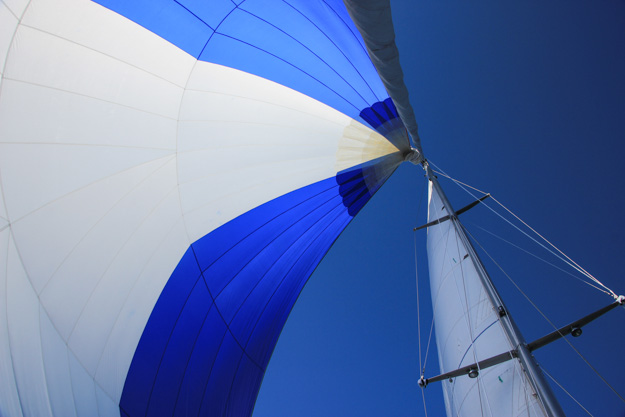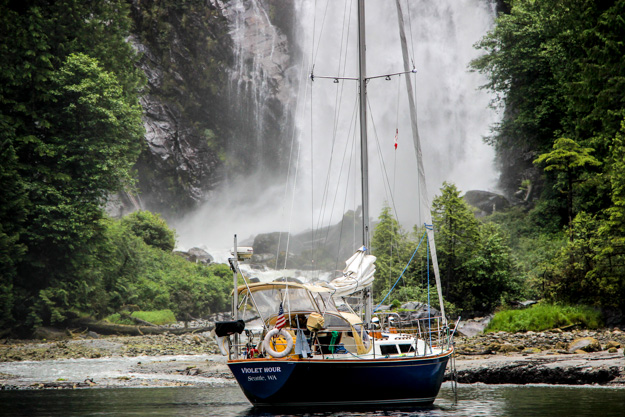In Part 1 of this post, we summarized our route, trip stats, and the wind and weather conditions we experienced. In this part we’ll describe the sailing a bit more, wildlife, and what went wrong (or didn’t) with our boat.
As inevitably happens on a 3 month trip, some equipment breaks or starts acting up – it’s Murphy’s Law of the sea. But while cruising we quickly learned to focus on only the things that actually matter. You get good at prioritizing really quickly. We had to conserve our energy because most of it went towards sailing the boat during the day.
Now back on shore, some of the problems we worry about in day-to-day life seem trivial in comparison. I heard a Clipper racer recently said:
That’s a good way of explaining the difference between shore life and life at sea. While cruising, the challenges are real, and have a direct connection with your safety, health, or comfort. Long-term sailing makes you realize how easy, cushy and soft our lives have become in modern times.


Sailing Tactics
As the wind levels mentioned previously show, if we didn’t sail in 4-10 knot winds, we would’ve done very little sailing. We found our sailing became very tactical this year. It was like a constant chess match with the wind – trying to make sure we left anchor at the right time, were sailing with the wind if possible, didn’t sail ourselves into wind holes, and watched for puffs of better air on the water.
We used the spinnaker, our storm staysail, and nearly every reefing configuration we have for the main and genoa.
But what was more important than which sails we had was having patience and flexibility. The patience to wait for wind, and the flexibility to not sail to a schedule were the two key factors that enabled us to sail more.
We averaged 5 gallons of diesel per week. We have a 16 gallon diesel tank plus up to 10 gallons in jerry cans, so we had enough we could’ve gone a month without filling up in theory – but never risked going below 50%. About 2-3 times per week we sailed onto or off of anchor. It’s not often possible to do that, but when it was we liked to just for fun – it was good practice of a new sailing skill, and gave us confidence we’d still be okay if our engine failed going into an anchorage.


